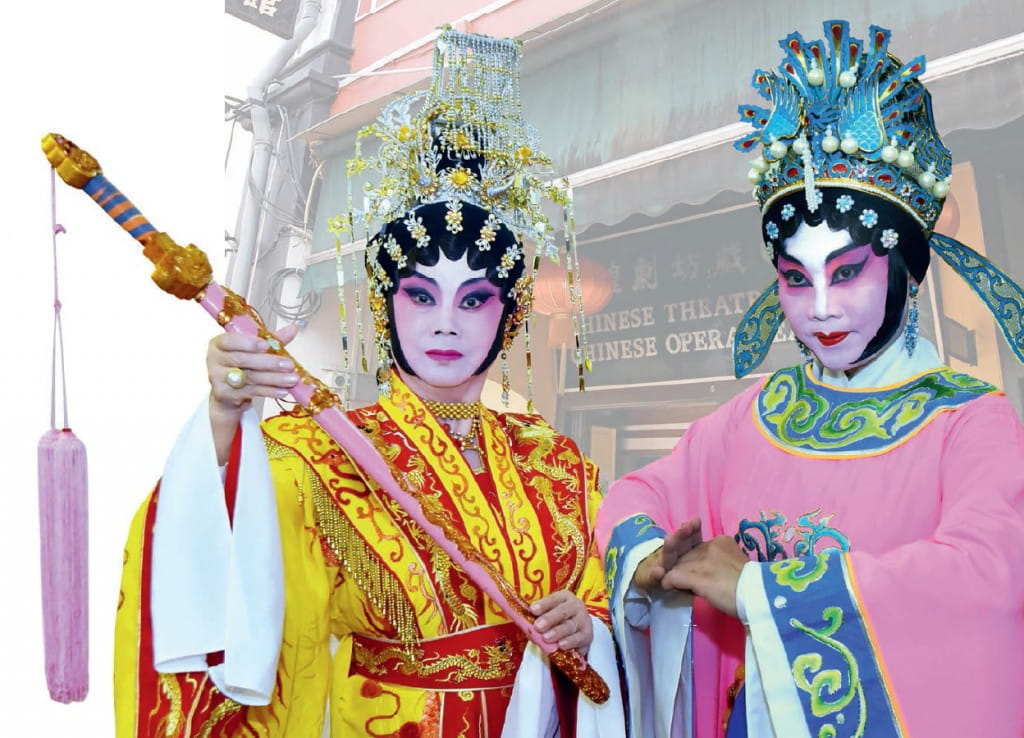Stories > Change of Scene
Change of Scene
In a humble teahouse, Chinese Theatre Circle has made a vanishing art form relevant to a multicultural audience.
BY CARA YAP
PHOTOS CHINESE THEATRE CIRCLE; THE STRAITS TIMES/ SPH
ou could easily amble by Chinese Opera Teahouse without an inkling of the evocative cultural showcases produced within – picture singers painted with peach-kissed porcelain masks, their undulating notes rippling against the lament of the erhu.
More than just a teahouse, it is home to Chinese Theatre Circle (CTC), a home-grown Cantonese opera troupe that introduces the art form to the uninitiated.
Tucked into a row of historic shophouses in Chinatown’s Smith Street, the narrow, nondescript space could easily be mistaken for a restaurant, among several establishments that beckon to tourists and Singaporeans alike from the revamped Chinatown Food Street.

Within the intimate setting of the 24-seat venue, lively weekend workshops on Chinese opera unfold. It’s a fitting location, considering that in the 19th century, Cantonese opera performances played out to packed audiences in Smith Street. Back then, it was referred to as hei yuen kai (theatre street in Cantonese).
Younger theatre-goers these days may be unfamiliar with the dazzlingly embellished costumes worn during such productions, or the intricate hand gestures that punctuate them. Hence the workshops held at this humble teahouse serve as primers to Chinese opera.
“Through The Workshop And Performance, My Family And I Got To Learn Not Just About Chinese Opera But Also Singapore's Heritage.”
Clyde Wellman
Beyond the technical aspects and pageantry of the art form, guests also gain first-hand insights from seasoned performers on the history and language that it is founded upon. The informative sessions are capped off by a short performance, accompanied by English subtitles projected on a screen.
“Through the workshop and performance, my family and I got to learn not just about Chinese opera but also that Singapore’s heritage is a lot richer than what is shown on tourism brochures,” said Clyde Wellman, an American living in Singapore.
Relating Chinese opera to a diverse audience has underpinned the work of the troupe since it was established in 1981. Though not many are aware that they can visit its cosy headquarters for an insider’s look into a vanishing art form, CTC has, over the years, staged more than 2,000 performances in Singapore and around the world.
These overseas trips have proven to be fertile ground for cross-cultural exchange. “From the Westerners, we have learnt how to blend the traditional with the contemporary. I realised that we cannot live within our own genres of art,” says Joanna Wong, CTC’s artistic director.
And it seems that putting a fresh spin on ancient tradition is something that is not new to Chinese Opera Teahouse. On certain days of the week, it stages karaoke singing concerts, to the tune of traditional Chinese opera music – the first of its kind in Singapore.
